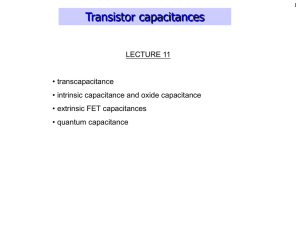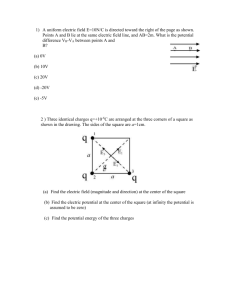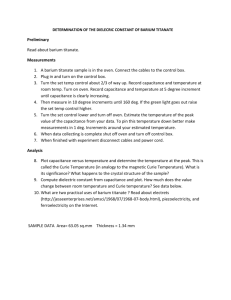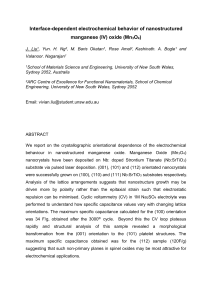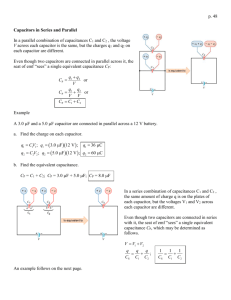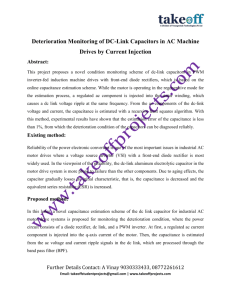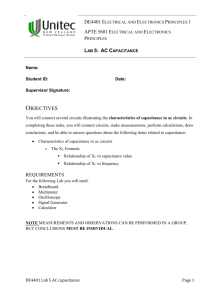Template for Electronic Submission to ACS Journals
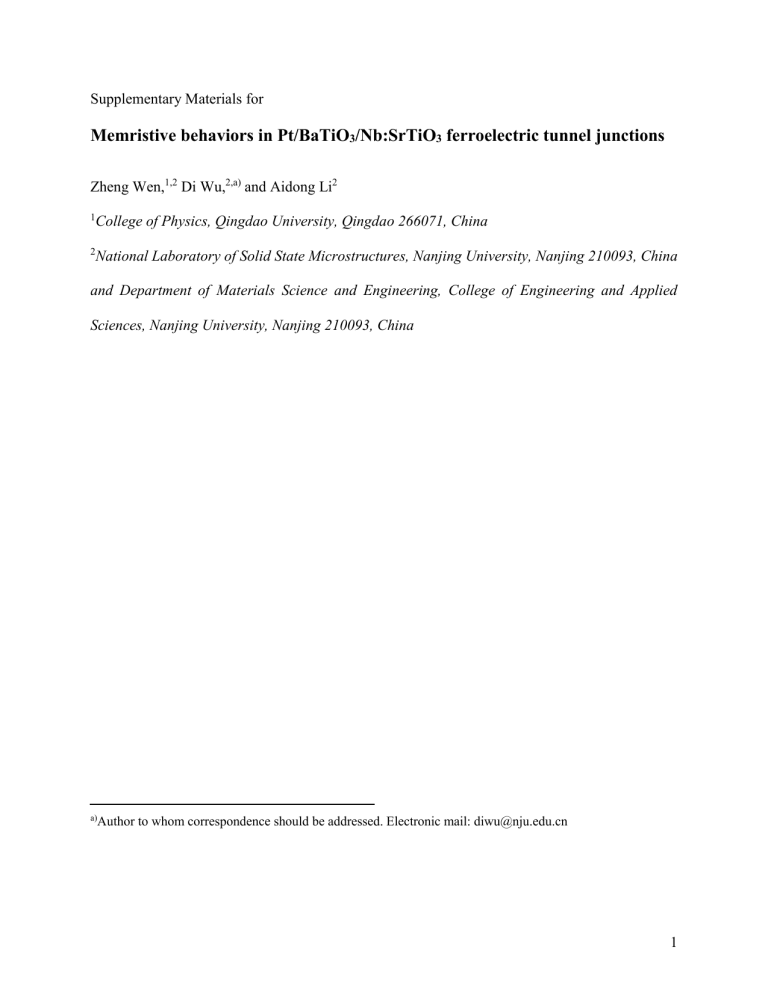
Supplementary Materials for
Memristive behaviors in Pt/BaTiO
3
/Nb:SrTiO
3
ferroelectric tunnel junctions
Zheng Wen,
1,2
Di Wu,
2,a)
and Aidong Li
2
1 College of Physics, Qingdao University, Qingdao 266071, China
2 National Laboratory of Solid State Microstructures, Nanjing University, Nanjing 210093, China and Department of Materials Science and Engineering, College of Engineering and Applied
Sciences, Nanjing University, Nanjing 210093, China a) Author to whom correspondence should be addressed. Electronic mail: diwu@nju.edu.cn
1
FIG. S1. Capacitance of the Pt/BTO/Nb:STO device measured at 150 K after the application of positive (a) or negative (b) pulses with increasing amplitude and corresponding depleted region width as functions of the write voltages.
The development of the depleted region with effective polarization in the Pt/BTO/Nb:STO
FTJ can be characterized by capacitance measurement, as shown in Fig. S1. The data were collected at 150 K and 1 MHz to obtain stable capacitance signals. The Pt/BTO/Nb:STO device can be modeled as a BTO capacitor connected in series with a capacitor of the depleted space charge region in the Nb:STO electrode. The measured capacitance C is given by
1
C
1
C
BTO
1
C
SC
, where C
BTO
and C
SC
are the capacitance of the BTO barrier and the space charge region, respectively. Prior to the capacitance measurements, the device was polarized upward by a -3.3 V set pulse. Then positive or negative write pulses with increasing amplitude were applied to switch the domains in the BTO barrier. The device was hence driven into various
2
resistance values in response to the width of depleted region. The capacitance was measured after each write pulse. As shown in Fig. S1(a), the capacitance of the Pt/BTO/Nb:STO device increases slowly from 90 to 104 pF as the write voltage increases from +1.3 to +2.4
V and jumps abruptly to a saturation value around 150 pF above +2.4 V. The variation of capacitance agrees well with that observed in the resistance hysteresis loops shown in Fig.
2(a), where an abrupt decrease of junction resistance occurs at about +2.2 V. The abrupt increase in capacitance as well as the abrupt decrease in tunneling resistance correspond to the reversal of the effective polarization from upward to downward at the coercive voltage.
As long as the effective polarization is reversed, the positive ferroelectric bound charges drive the Nb:STO surface into accumulation as a result of the ferroelectric field effect. The extra tunneling barrier in Nb:STO is eliminated and the space charge region capacitance C
SC can be omitted.
1 This results in the abrupt increase of the measured capacitance and the abrupt decrease of the resistance. Further increasing the write amplitude above the coercive voltage drives the Nb:STO surface further accumulated. The measured capacitance is insensitive to the concentration of accumulated electrons because the capacitance is now completely determined by the ultrathin BTO layer. However, the tunneling resistance decreases dramatically due to the increase of tunneling transmittance in absence of the extra barrier, as discussed previously.
1 The relative dielectric constant of the BTO estimated from the capacitance in accumulation is ~65, in good agreement with the results reported previously in compressively-strained BTO ultrathin films.
2,3 As the tunneling resistance evolves from the OFF to the ON state, the measured capacitance of the FTJ increases gradually due to the decrease of depleted region width in the Nb:STO, in response to decreasing effective upward polarization. Estimated from the measured capacitance, the
3
depleted region width decreases from ~5.5 to ~3.5 nm with increasing write amplitude from +1.3 to +2.4 V, before the device is switched to the ON state. A dielectric constant of 200 is adopted in the calculation for the depleted Nb:STO under strong bias.
1,4,5 The evolution of capacitance, as negative pulses are applied, can be explained in a similar way. As shown in Fig. S1(b), the continuous decreasing capacitance corresponds to the widening of the depleted region with the increase of effective upward polarization as a result of domain switching in the BTO barrier. The depletion width is estimated to increase from ~5.3 to ~6.8 nm as the write amplitude increases from -3.3 to -5.0 V.
1
Z. Wen, C. Li, D. Wu, A. Li, and N. Ming, Nat. Mater. 12 , 617 (2013).
2
Y. Yano, K. Iijima, Y. Daitoh, T. Terashima, Y. Bando, Y. Watanabe, H. Kasatani, and H.
Terauchi, J. Appl. Phys. 76 , 7833 (1994).
3 O. Trithaveesak, J. Schubert, and Ch. Buchal, J. Appl. Phys. 98 , 114101 (2005).
4
S. Suzuki, T. Yamamoto, H. Suzuki, K. Kawaguchi, K. Takahashi, and Y. Yoshisato, J. Appl.
Phys. 81 , 6830 (1997).
5
J. Li, N. Ohashi, H. Okushi, and H. Haneda, Phys. Rev. B 83 , 125317 (2011).
4
